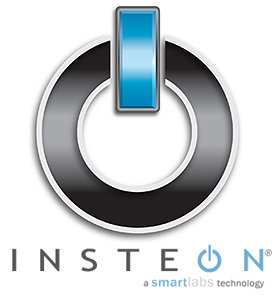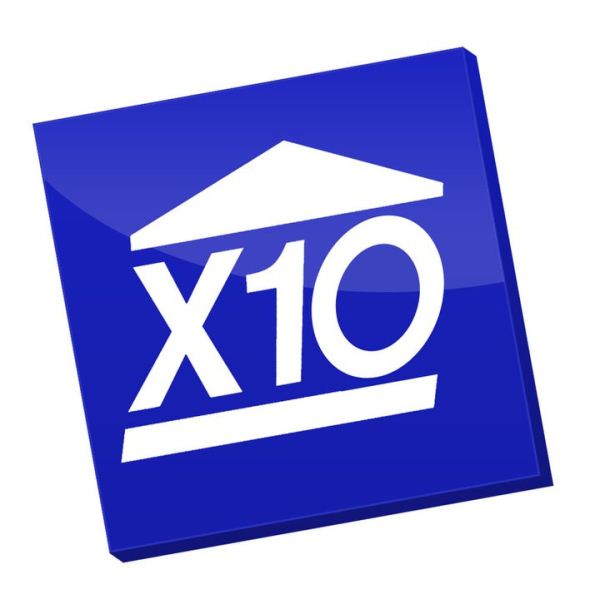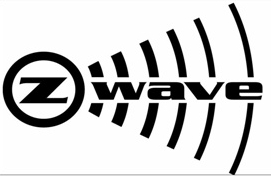Home Automation and the 'Internet of Things'
by Ganesh T S on October 4, 2012 10:30 AM EST- Posted in
- Gadgets
- Home Automation
- Wi-Fi
Electrical devices participating in home automation systems have to be integrated with some sort of communication protocol. These protocols may operate over powerline, RF or a combination of both. Some of these protocols are open standards, while others are proprietary (either belonging to a systems manufacturer or a silicon vendor). In this section, we will take a look at some of the major home automation options available to consumers.
Infrared Remote Control:
Infrared (IR) remote controls can be considered as the precursor of modern HA technologies. However, they are mainly used for point-to-point control flow. There is no bi-directional information exchange. Even though universal remotes have been around for a long time, their line of sight issues and non-interchangeability prevent them from being considered in the home automation space.
X-10:
True HA technologies require a HAN (home area network) where line of sight is not an issue and it is possible to have information flow in either direction. In the late 1970s, X-10 was developed as an international and open industry standard for home automation communication using power lines. A wireless radio based protocol transport is also part of the specification. More information about X-10 can be obtained here.
An X-10 network has transmitters, receivers and intermediate units which can receive and transmit X-10 commands. Transmitters are switches which send appropriate X-10 commands when activated, while receivers are devices which can shape the power delivered to the controlled devices (either as an on-off switch or by acting as a dimmer for a light fixture). Bidirectional devices can provide status and sensor information. A X-10 network can have up to 256 unique devices. Since the technology has been around for a long time, devices incorporating X-10 technology can be had for as low as $10.
Despite being simple and easy to configure, X-10 is slow (60 bps), has low reliability (particularly across circuit breakers and power line filters) and lacks encryption for security purposes.
UPB (Universal Powerline Bus):
PCS Powerline Systems (Northridge, CA) introduced the UPB protocol for home automation in 1998. It was based on the X-10 standard, but improved the transmission rate (480 bps) and provided higher reliability. UPB technology requires a router-like controller.

However, UPB doesn't seem to be an open standard. Despite winning a lot of people over from X-10 (because of its technical advantages), the technology continues to remain costly. The cheapest ones (such as wall switches) seem to retail for $75. UPB continues to enjoy support from CIs, but, it is doubtful whether users who want to install their own systems will opt for this technology.
ZigBee:
ZigBee, a pure wireless technology, is based upon the 802.15.4 IEEE standard for WPANs (Wireless Personal Area Networks). It is intended to be a low-cost, low-power wireless mesh network standard allowing for secure communication with a data rate of up to 250 kbps.

ZigBee was originally conceived as an alternative to Wi-Fi / Bluetooth around 1998 as a solution for self-organizing ad-hoc digital networks. ZigBee-based HA solutions operate in the 2.4 GHz range (though the standards allow for sub-GHz operation in the US and EU) and have a range of 70 meters indoors and up to 400 meters outdoors. The networks are self organizing, and any member can be the controlling node. There are plenty of ZigBee home automation solutions already available in the market.
Z-Wave:
Z-Wave, also a pure wireless technology, was developed by Zen-Sys, which was founded in 1999. In 2005, they initiated the Z-Wave Alliance, and the company itself was acquired in 2008 by Sigma Designs. The technology is similar at a macro-level to ZigBee in the sense that both are short-range wireless technologies which create a mesh network. However, while ZigBee operates mostly in the 2.4 GHz range, Z-Wave operates in the 900 MHz spectrum. Also, unlike ZigBee, Z-Wave is not an open standard.
Data rates can vary between 9.6 kbps and 40 kbps. Device pricing is also similar to ZigBee, with prices starting around $30. Both ZigBee and Z-Wave require a gateway to act as a master controller despite having mesh networking capabilities. Both of them can have up to 256 devices per network. Some Z-Wave controllers such as the Vera allow for combination of multiple networks to support more than 256 devices.
Insteon:
Insteon is one of the more recent home automation technologies. Like UPB, they are not a open industry standard. However, the technical capabilities have ensured its popularity. It was first deployed in 2005. One of its main plus points is the integration of both RF and powerline technologies for networking. The devices in a Insteon network operate in true mesh fashion, and so, there is no need for a special gateway / master controller (even though one is needed for web access). Data rates can vary between 2880 bps and 38400 bps depending on whether powerline or RF is used.

Like all other HA technologies described so far in this section, Insteon is used for small, low data rate transfers. Each network can have more than 16 million devices compared to the 256 possible in other technologies. One of the additional interesting aspects of Insteon is full compatibility with X10 devices. The pricing for devices incorporating Insteon technology starts at around $30.












54 Comments
View All Comments
AshuJoshi - Thursday, October 4, 2012 - link
Hi Ganesh,Very extensive article and well covered. A few thoughts, and I think you or your readers have already touched upon this:
1. Bluetooth LE / 4.0 - is pretty important as well. One because many medical devices have adopted BT, and not Zigbee or ZWave or WiFi.
2. ZWave is very popular BUT my concern is that it is controlled by one company.
3. SEP 2.0 is going to be a very important move forward especially because it will work with WiFi, HPAV, and Zigbee.
4. Kickstarter - I noticed that you picked some projects. I think there are three segments to Home Automation - DIY, Luxury and NOW Managed (as provided by the likes of Comcast). Luxury traditionally belonged to the likes of Creston but Control4 is playing a major disruptor now. For the DIY segment - Kickstarter has changed the world. Here is my post on the # of projects on Kickstarter for HA - http://bit.ly/Q02Mk2
5. Service Providers are getting very active in this space - Comcast, Rogers, AT&T, DT etc.
AshuJoshi - Thursday, October 4, 2012 - link
WiFi appears to be a popular choice for powered appliances and as the article talks about Semiconductor providers such as Marvell are providing compelling solutions. The challenge is that every implementation especially if it is from a different semi partner - its implementation in SW is different. That is there is no standard or specification to discover devices on WiFi - each implementation could be different. I am contrasting this with Zigbee because Zigbee has a well-defined protocol on how devices are discovered and controlled by category (Zigbee has its own terminology for all of this).davegravy - Friday, October 5, 2012 - link
Lots of talk about hardware, and a bit of discussion about controllers and host software, but there isn't a lot of software out there that's provides a bridge between all the different protocols and the central brain/logic essential to the smart home.I've been using LinuxMCE (free, open-source) and have been following their development for the past while. Not yet for the technically faint of heart, but there ARE device templates for a large number of different protocols (Z-wave, Insteon, KNX, RS232, IR, X10, various ethernet devices, etc) allowing you to control pretty much any type of HA device. It also controls media and VOIP telecom in your house. The end result is a fully integrated solution between all devices in your home.
Example: Someone rings the door bell. Your porch light turns on (if it is after sundown), your IP cam turns on, its video feed is forwarded to your mobile phone, and (if it knows you are home because your security system is not armed, or by other logic) to the various TVs around your house after powering them on. The video is also recorded to your server. If you were watching TV during this event, it pauses your feed and to show you the front door IP cam.
The possibilities are truly endless with this software, and I have to give it a plug here.
ntspam - Friday, October 5, 2012 - link
I was really hoping that google putting its software creating talent behind home automation was finally going to kick this market mainstream. What a disappointment.jed22281 - Sunday, October 7, 2012 - link
These guys have been ahead of the curve in this area for 4yrs+ now:http://openremote.org/display/HOME/OpenRemote
Truly open, ubiquitous, Home Automation solutions, shame they didn't get a mention.
taltamir - Sunday, October 7, 2012 - link
WiFi controlled lights, thermostat, and power... now your home can be hacked in ways that holliwood only dreamed of.geraldt - Friday, October 12, 2012 - link
Nice article on one of my obsessions. I so want WiFi to be the household communications protocol (actually TcpIp with any mix of wireless, wired CAT5, powerline Ethernet etc. that may be appropriate depending on the devices and controllers).I want a ubiquitous open standard that is well understood. I want two-way comm. I want sufficient bandwidth for video. I want security. I want all my current and future smart devices (desktop, tablet, smart phone, Raspberry Pi, robots, etc.) to be able to participate. I want that common infrastructure so I can incrementally add devices from various manufacturers. I also want the option of writing my own code in smart controllers e.g. PC.
One point the article kind of makes is that common comm protocol is not enough, you need a higher level API for each device that is well documented.
p.s. I think the technology in the new Kindle Paperwhite (touch, front lit, very low power, wifi) could be packaged into a great HA and AV remote. No video is a drawback for some applications like answering the door but still pictures at 1 fps might be fine.
xSaintSinnerx - Wednesday, November 7, 2012 - link
Maybe I'm mistaken but few years ago Microsoft was talking about getting involved in HA business. I believe Gates was talking about it too. MS could easily create standard for HA Wi-Fi and become leader on the market with hardware and software in Windows RT or 8 environment.can you imagine possibilities ... BSoD on your thermostat.
Nomzam - Thursday, November 8, 2012 - link
Yeah the idea and performance are best but there is a security risk of internet.<a href="http://www.squidoo.com/iport-launchport-inductive-... Automation</a>
space31 - Wednesday, August 7, 2013 - link
Some new web remonte power hère : http://www.wifipower.fr